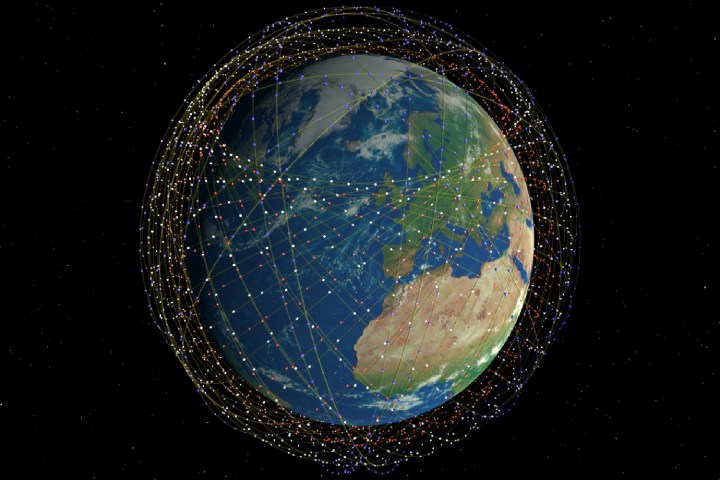
The FCC this week unanimously approved SpaceX’s ambitious plan to launch 7,518 satellites into low-Earth orbit. These satellites, along with 4,425 previously approved satellites, will serve as the backbone for the company’s proposed Starlink broadband network. As it does with most of its projects, SpaceX is thinking big with its global broadband network. The company is expected to spend more than $10 billion to build and launch a constellation of satellites that will provide high-speed internet coverage to just about every corner of the planet.
SpaceX plans initially to launch 4,425 Starlink satellites into a low-Earth orbit followed by an additional 7,518 satellite at an even lower orbit. The first group of satellites will operate at an altitude of 1,110km to 1,325km and will form the backbone of the company’s Starlink broadband service. The additional satellites will circle the Earth at altitudes from 335km to 346km and will boost capacity and lower latency, especially in densely populated areas. Because of these low orbits, SpaceX says its planned Starlink broadband network will have latencies as low as 25ms and gigabit speeds that will rival existing cable or fiber optic systems. Not only will it be fast, but the Starlink network also will reach those areas that have poor or no internet connectivity.
FCC rules require SpaceX to launch 50 percent of its proposed satellites within six years and all of them within nine years unless a waiver is granted. To put this deployment in perspective, there are currently only 1,886 active satellites presently in orbit. These new SpaceX satellites will increase the number of active satellites six-fold in less than a decade. A recent simulation by Mark Handley, professor of Networked Systems in the Department of Computer Science at University College London, visually shows the off-the-charts scale and complexity of the network.
SpaceX already is making progress on this formidable plan. On February 22, 2018, the company successfully launched its first two Starlink test satellites, Tintin A and Tintin B, from California’s Vandenberg Air Force Base. These satellites are being used to test the Starlink network on a small scale and demonstrate its feasibility. It is not known whether these test satellites will be used in the network when it finally is brought online. As part of its approval, the FCC requires SpaceX to have a debris mitigation plan to keep the space junk problem from getting worse.
Editors' Recommendations
- How SpaceX could transform Starlink into an ultraprecise GPS network
- SpaceX Dragon spacecraft completes final mission ahead of crewed launch
- SpaceX performs its sixth Starlink launch tomorrow: Here’s how to watch
- Elon Musk insists Starlink will cause zero issues for astronomers
- How to watch SpaceX launch its 20th resupply mission to the ISS today




